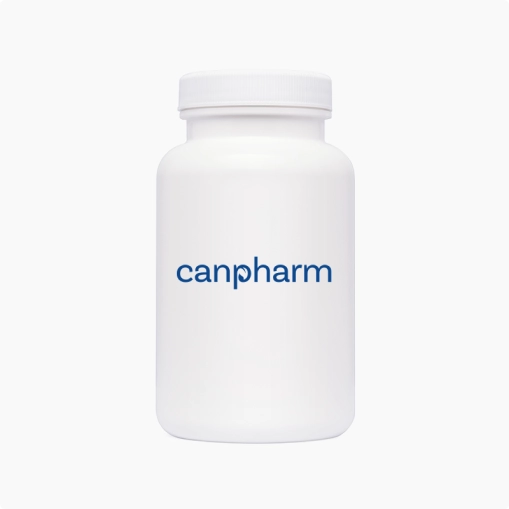
Basaglar (Insulin Glargine)
Out of stock
We will notify you as soon as it becomes available.
-
Description
-
Related Products
-
Related Conditions
Fact Table
| Fact Table | |
|---|---|
| Formula | C267H404N72O78S6 |
| License | FDA approved |
| Bioavailability | ~60% (subcutaneous injection) |
| Legal status | Prescription only |
| Chemical Name | Insulin glargine recombinant |
| Elimination half-life | ~12 hours (duration of action up to 24 hours) |
| Dosage (Strength) | 100 units/mL (U-100) |
| Pregnancy | Category C – Consult doctor |
| Brands | Basaglar, Lantus, Toujeo |
| Protein binding | Negligible |
| PubChem CID | 16132438 |
| MedlinePlus | a615033 |
| ChEBI | 8707 |
| ATC code | A10AE04 |
| DrugBank | DB00047 |
| KEGG | D04572 |
| Routes of administration | Subcutaneous injection |
Basaglar (Insulin Glargine) is a long-acting human insulin analog used to improve glycemic control in adults and children with type 1 diabetes and in adults with type 2 diabetes mellitus. It has a consistent onset of action beginning within several hours after injection and provides up to 24 hours of blood glucose-lowering activity without a pronounced peak. Basaglar is biosimilar to Lantus and contains the same active ingredient—insulin glargine—though it is approved through a different regulatory pathway. It is formulated for once-daily subcutaneous injection and is typically used in combination with rapid-acting insulin in type 1 diabetes or as a standalone basal insulin in type 2 diabetes.
Directions
Basaglar should be administered once daily at the same time each day by subcutaneous injection into the abdominal area, thigh, or upper arm. The dose must be individualized based on blood glucose monitoring, metabolic needs, and previous insulin therapy. Basaglar is not interchangeable with other insulin glargine products (such as Lantus or Toujeo) on a unit-per-unit basis without medical supervision. It must not be mixed with other insulins or administered intravenously. Injection sites should be rotated within the same region to prevent lipodystrophy.
Ingredients
Each mL of Basaglar contains 100 units of insulin glargine. Inactive ingredients include glycerin, metacresol, zinc oxide, polysorbate 20, sodium hydroxide (to adjust pH), and water for injection. The solution is clear, colorless, and sterile, with an approximate pH of 4.0.
Contraindications
Basaglar is contraindicated in patients with known hypersensitivity to insulin glargine or any of the product’s excipients. It must not be used during episodes of hypoglycemia. Intravenous administration or use in insulin pumps is inappropriate due to the risk of severe hypoglycemia.
Cautions
Careful monitoring of blood glucose is essential when starting or adjusting Basaglar. Patients with renal or hepatic impairment may require dose adjustments due to altered insulin sensitivity. Switching from other insulin regimens should be done under medical supervision. Certain medications, such as beta-blockers or corticosteroids, may affect insulin efficacy or mask symptoms of hypoglycemia. Alcohol consumption can also influence glucose levels. Patients must be instructed on the proper use of the Basaglar KwikPen and advised not to reuse or share needles.
Side Effects
Possible side effects of Basaglar include:
- Hypoglycemia (most frequent)
- Injection site reactions (e.g., redness, pain, swelling)
- Lipodystrophy
- Allergic reactions (localized or systemic)
- Edema
- Weight gain
Frequently Asked Questions about Basaglar (Insulin Glargine)
Is Basaglar a fast-acting insulin?
No. Basaglar is a long-acting insulin. It does not cover post-meal blood sugar spikes. For that, a rapid-acting insulin is needed.
Can I travel with Basaglar?
Yes. Store in a cool case in your carry-on luggage. Avoid extreme temperatures, and bring your prescription and a doctor’s note if flying.
What should I do in case of a Basaglar overdose?
Seek emergency medical help. Overdose may cause severe hypoglycemia, requiring glucose, glucagon, or hospitalization.
Does Basaglar have a peak action?
No. Basaglar has a relatively flat, peakless action, providing steady blood sugar control over 24 hours.
Can I reuse the needle on a Basaglar pen?
No. Always use a new needle with each injection to prevent infection, pain, and inaccurate dosing.
How long should I wait to see results from Basaglar?
You may see improvements in fasting blood sugar within a few days. Full effect on A1c takes several weeks to months.
Can I switch from Lantus to Basaglar?
Yes, but it should be done under medical supervision. Though similar, they are not identical, and minor adjustments may be needed.
Does Basaglar interact with other medications?
Yes. Medications like steroids, beta-blockers, or diuretics can impact blood sugar. Always tell your doctor what you're taking.
Can I take Basaglar with breakfast?
Yes, if that’s your scheduled time. The key is to take it at the same time every day, whether morning or evening.
How long is Basaglar good once opened?
An in-use Basaglar KwikPen is good for 28 days at room temperature. After that, discard it, even if insulin remains.
